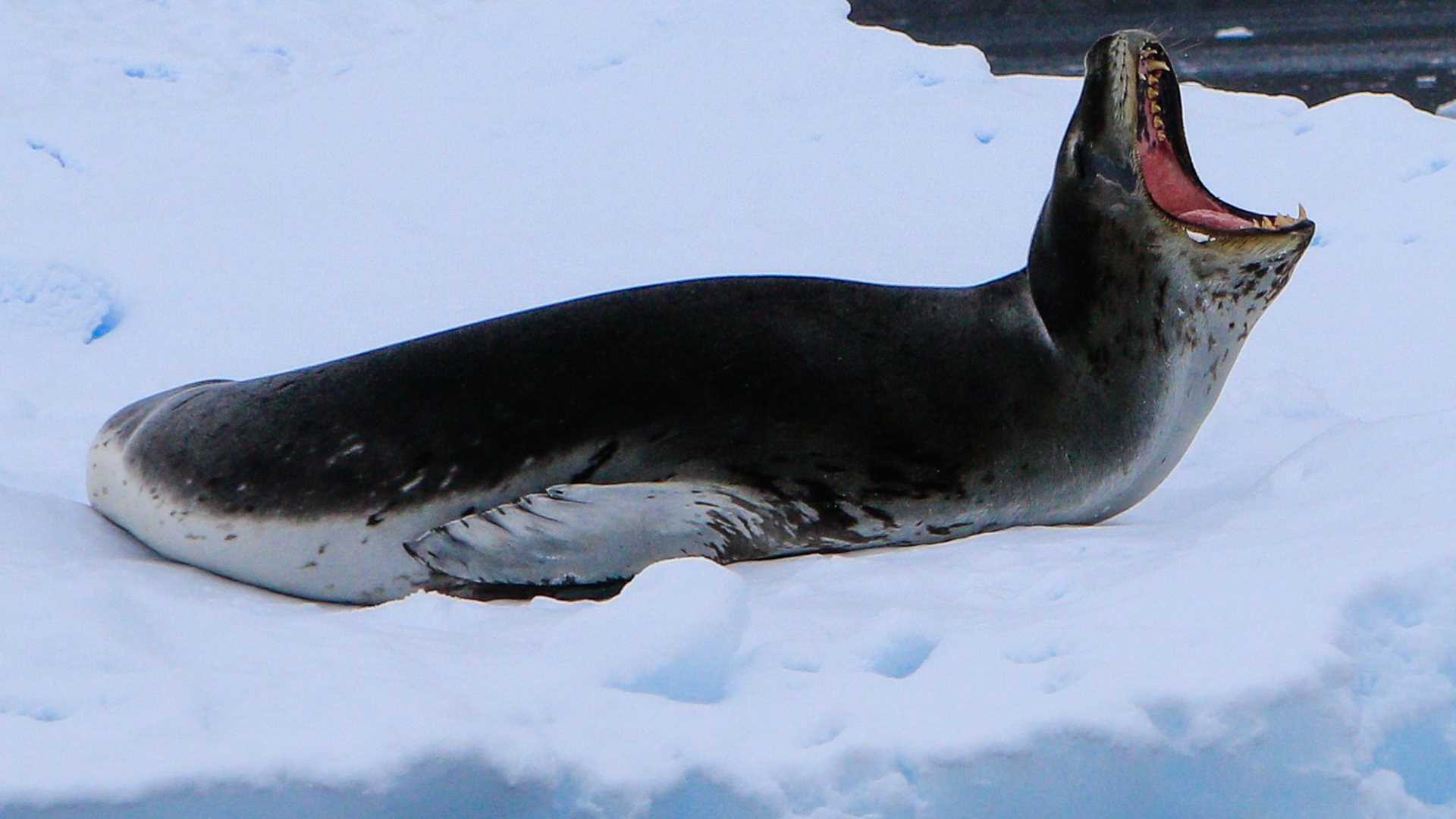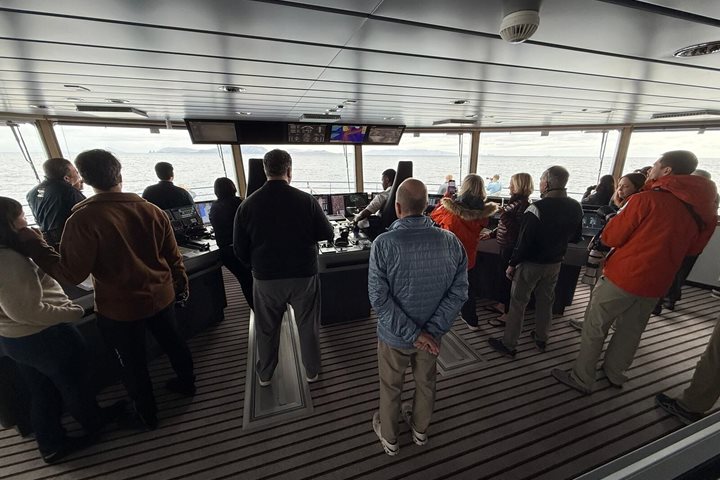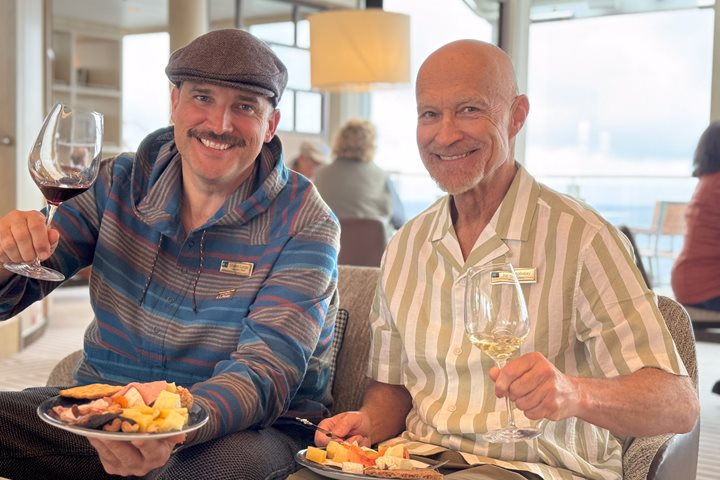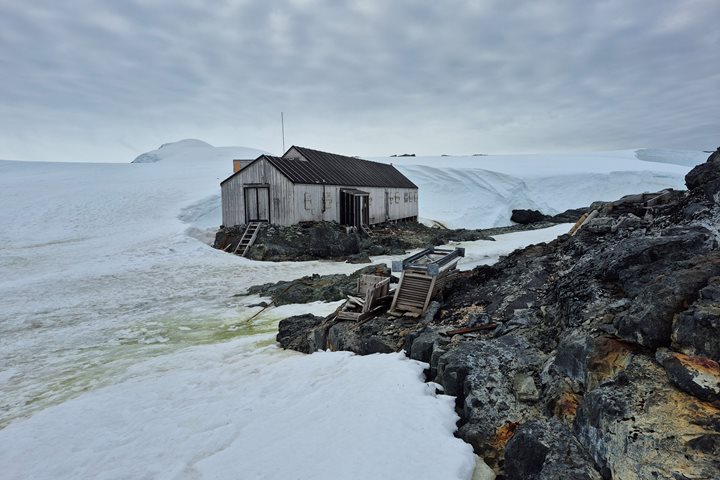This morning National Geographic Explorer awoke along the Danco Coast on the west side of the Antarctic Peninsula. After breakfast, we donned all our layers and explored this glacially carved landscape by Zodiac. Cierva Cove and this stretch of coast are arguably the most beautiful on the continent. The fjord, full of ice, posed some obstacles, but that became part of the experience as we explored among the brash, the growlers, bergy bits, and icebergs. A few gentoo penguins entertained us both on ice and in the water as we carved a path through the icy medium that defines Antarctica. With 98 percent of the continent covered in ice up to 2.5 miles thick, we were truly beginning to appreciate the enormity and power of frozen water.
Signs of man were seen along the shore in the form of the Argentine research station, Base Primavera. Of the 70 stations found around the continent, Argentina has 13 of them, six of which are permanent, year-round facilities. Further down the fjord, we found an amazing piece of nature’s art in the form of an arch with a blue underbelly. From there, along the verdant coast of moss and hair grass, we spotted Antarctic terns harassing kelp gulls, who were no doubt nosing around the tern colony looking for eggs. A Weddell seal on ice was in a deep snooze, and then we found the king of all Antarctic pinnipeds: a leopard seal, also resting. Elongated flippers, a sinuous, long, and slender body, a massive head that appears to lack a forehead, and an enormous gape are some of the striking features of this species. Unlike most true seals, leopards use their foreflippers for propulsion, and the females are larger than the males. At one point, it yawned and showed us its ginormous gape—we could see its unique upper and lower molars, which interlock to provide an efficient krill sieve.
In the afternoon, we hoped to kayak but either the ice or the wind prevented this activity. We opted to continue cruising and heard a presentation from Carol about the amazing Swedish Antarctic Expedition, led by Otto Nordenskiöld in 1901.







